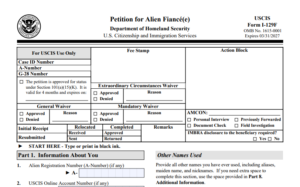In most cases, the family member of a principal EB-5 Petitioner, called a “dependent” or “beneficiary”, can delay his or her visa application to immigrate to the U.S. until a later date if the conditions for eligibility are still in place in the future. The decision for a spouse to delay his or her immigration is common for some EB-5 immigrant investors.
Sometimes. one spouse wants to immigrate immediately and bring the children to the United States while the other spouse will delay his or her immigration. The most common reasons are that one spouse wants to continue to work and earn income in his or her home country or stay behind and continue to operate a business. In addition, there may be tax planning strategies available for a spouse not to immigrate at the same time as the EB-5 Petitioner.
There are some important considerations when deciding if the beneficiary spouse will delay his or her immigration.
At the time the beneficiary spouse decides to immigrate, the EB-5 Petitioner spouse must continue to maintain his or her resident status and the couple must also stay married.
The EB-5 “Immigrant Investor Program” also known as the “Regional Center Program” (the “Program”) must continue to exist. Under EB-5 law, the Program is still temporary. It has been extended from time to time since its enactment in 1993. The latest extension is until June 30, 2021.
We expect that the Program will continue to be extended or made permanent by the U.S. Congress. If the Program is terminated, immigrant visas for EB-5 Petitioners and their dependents who invested in EB-5 projects sponsored under the Program – (I5) and (R5) – will no longer exist. This means that in the unlikely event that the Program ends, anyone who does not have a visa issued by a U.S. Consulate, or who has not yet completed their adjustment of status with the United States Citizenship and Immigration Services, will no longer be eligible for an EB-5 visa. A spouse that delays his or immigration might lose his or her opportunity if the Program sunsets.
If the spouse does not follow the EB-5 Petitioner for several years, then the petitioning spouse must also complete the removal of conditions process. After 21 months of conditional permanent residence, an EB-5 Petitioners must file a Form I-829 Petition to remove the condition from their permanent resident status. If the EB-5 Petitioner does not file the I-829 Petition or otherwise maintain his or her permanent resident status, then the other spouse will not be eligible to immigrate later.
We usually recommend that immigrant visa applicants always move forward with their visa application process, because it is easier to maintain permanent resident status than it is to obtain it, and we can never predict if there may be changes to U.S. immigration laws that impact a beneficiaries’ eligibility. However, some families do have compelling reasons for one spouse to stay behind and immigrate at a later time.
If you are considering this, we welcome you to contact one of our lawyers at info@enterlinepartners.com and speak with us in Ho Chi Minh City, Manila and Taipei.
ENTERLINE & PARTNERS CONSULTING
Ho Chi Minh City, Vietnam Office
Suite 601, 6th Floor, Saigon Tower
29 Le Duan Street
Ben Nghe Ward, District 1
Ho Chi Minh City, Vietnam
Tel: +84 933 301 488
Email: info@enterlinepartners.com
Facebook: Enterline & Partners – Dịch vụ Thị thực và Định cư Hoa Kỳ
Website: http://enterlinepartners.com
Manila, Philippines Office
Tel: +632 5310 1491
Email: info@enterlinepartners.com
Facebook: Enterline and Partners Philippines
Website: https://enterlinepartners.com/language/en/welcome/
Copyright 2021. This article is for information purposes only and does not constitute legal advice. This article may be changed with or without notice. The opinions expressed in this article are those of Enterline and Partners only.








